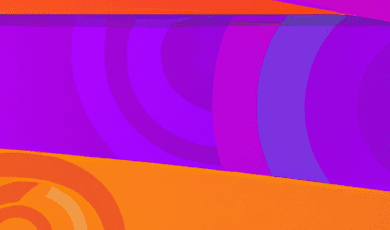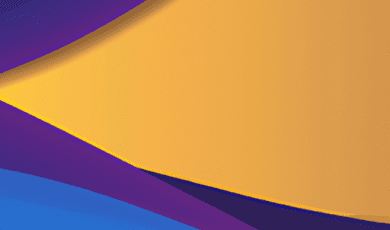
Globalization has blurred traditional borders and brought cultures closer together than ever before. In this interconnected world, healthcare professionals increasingly treat patients from diverse linguistic backgrounds. But in an industry where precise communication can be a matter of life and death, how do we ensure every patient receives equal, high-quality care? The answer lies in the realm where languages meet: medical translation.
The Vital Role of Medical Translation in Modern Healthcare
Providing medical care is a complex undertaking that relies on clear and accurate communication. From patient intake forms to detailed surgical directions, every word matters. When patients and practitioners don’t speak the same language, the risk of misunderstanding escalates dramatically. In these situations, medical translation act as the critical bridge, safeguarding both patient well-being and clinical outcomes.
Medical translation is more than a matter of swapping words between languages. It demands a deep understanding of medical terminology, the context of care, and cultural nuances. After all, a simple mistranslation of a prescription label or an allergy warning could have devastating consequences. That’s why healthcare organizations worldwide trust specialized linguists to handle everything from patient records and consent forms to clinical study documentation and pharmaceutical information.
Why Expertise Matters in Medical Translation
The medical field is highly specialized, with its own evolving lexicon, shorthand, and conventions. General translators may excel in legal, technical, or literary translations, but they are seldom equipped for the intricacies of medicine. Experienced medical translators are fluent not only in multiple languages, but also in the latest scientific and procedural protocols.
Accurate translations are essential at each stage of patient care:
- Patient Communication: Intake forms, discharge instructions, and consent agreements all require precise translation to ensure patients understand their diagnosis, treatment options, and risks.
- Clinical Research: As drug trials and medical studies span continents, translating research protocols and participant consent forms ensures compliance and ethical standards across jurisdictions.
- Product Information: Medical devices and pharmaceuticals must be accompanied by instruction manuals, labels, and safety data in multiple languages to meet regulatory benchmarks and guarantee user safety.
Choosing the right medical translation partner is crucial. Credentials like ISO certification, compliance with HIPAA and other privacy standards, and subject-matter expertise should guide the selection process.
Medical Translation Challenges: More Than Just Words
Why does medical translation remain so challenging? Here are several core issues linguists and healthcare providers face:
- Complex Terminology: Medicine is filled with jargon, Latin phrases, and abbreviations requiring deep familiarity to translate without error.
- Regulatory Differences: Medical devices, pharmaceuticals, and procedures must comply with local regulatory demands, which affect both the translation content and presentation.
- Cultural Sensitivity: Different cultures may interpret symptoms, diagnosis, or treatment instructions differently, calling for sensitivity and adaptation, not just word-for-word translation.
- Technology Integration: With the digitalization of health records and telemedicine, translators must also navigate data privacy, security, and compatibility with various electronic health systems.
These challenges underscore the need for comprehensive, specialized services—where medical expertise and linguistic skill go hand in hand. The ultimate goal? Clear, patient-centered communications that foster trust and confidence in care.
Technology’s Role in Medical Translation Services
The rise of new technologies has transformed the landscape of medical translation. While automated translation tools and AI-driven software offer speed and scalability, human experts remain indispensable for accuracy and nuance. For instance, machine translation may handle initial drafts, but expert linguists are needed to proof, adapt, and certify translations for medical use.
Additionally, advances like computer-assisted translation (CAT) tools, terminology databases, and secure digital platforms streamline workflows, ensuring faster turnaround times and consistent quality. These technologies empower medical translators to maintain high standards, even with tight deadlines and high volumes.
As telemedicine expands and more patients seek care across borders, seamless medical translation services are essential to keeping patients informed and safe—no matter where they are or what language they speak.
Benefits of Professional Medical Translation Services
So, what are the direct advantages of investing in expert medical translation solutions? Here’s why they matter:
- Patient Safety: Accurate translations protect patients from misdiagnosis, medication errors, and other dangerous misunderstandings.
- Legal Compliance: Meeting regulatory requirements and ethical standards shields organizations from liability and reputational damage.
- Streamlined Global Research: Medical research can span the globe, but only when protocols, data, and findings are clearly and consistently translated for every jurisdiction.
- Cultural Inclusivity: Translations crafted with cultural context in mind foster trust, improve patient engagement, and drive better outcomes for diverse populations.
- Brand Reputation: High-quality translations reflect positively on healthcare and pharmaceutical brands, reinforcing their commitment to excellence worldwide.
Medical translation is ultimately an investment in clarity, trust, and international collaboration. As the healthcare landscape grows more complex and interconnected, the value of accurate, sensitive communication becomes only more vital.
Uniting Global Care with Medical Translation
In healthcare, compassion knows no language barrier and precision has no mother tongue. As local care settings become microcosms of a global community, the need for medical translation is only growing. These services are not a luxury, but a necessity for providers, researchers, and patients navigating a multilingual world.
By choosing a trusted partner with proven expertise—carefully navigating the linguistic, regulatory, and technological landscape—healthcare organizations can ensure every patient hears and understands the same message of hope, healing, and respect.
If you are seeking comprehensive, certified, and culturally attuned medical translation solutions, turn to experienced professionals who can make the difference between confusion and clarity, risk and reassurance. Explore how quality translation can transform your healthcare communication landscape today.








